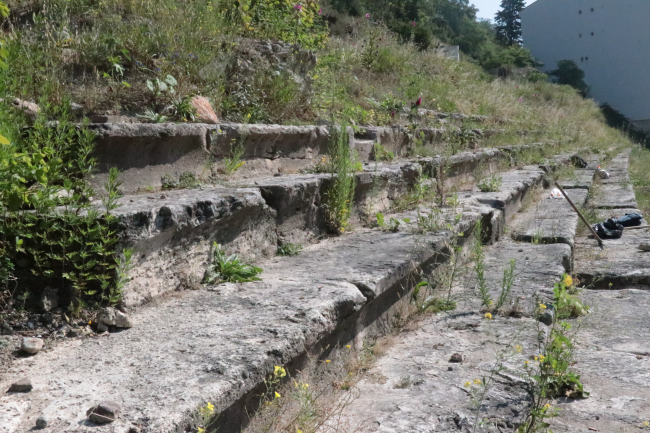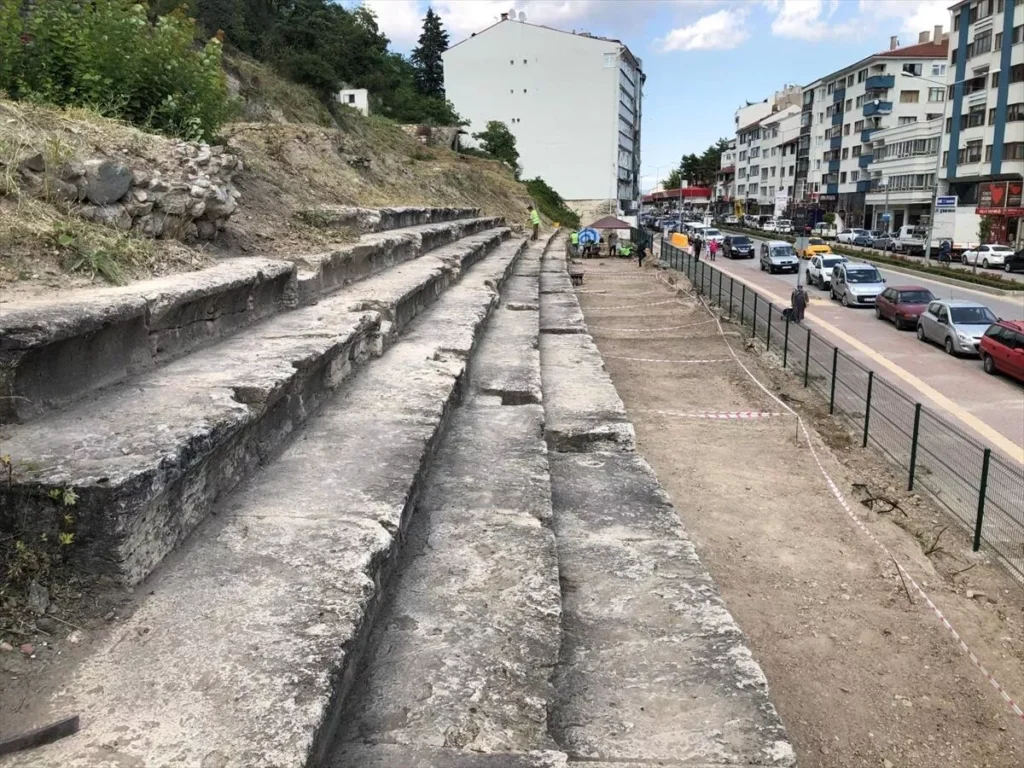
Ancient Hadrian’s Stadium Restoration Starts in Bolu
The restoration of Hadrian’s ancient stadium in Bolu, a significant historical landmark in Türkiye’s Western Black Sea region, has begun. This remarkable structure, dedicated to Roman Emperor Hadrian, offers a fascinating glimpse into the region’s rich Roman past.
A Gift for the Emperor: The Stadium’s Origins
Wealthy locals built the stadium in the 2nd and 3rd centuries AD to commemorate Emperor Hadrian’s visit to Claudiopolis (modern-day Bolu). Discovered in 2008, excavations have so far uncovered 94.5-meter-long sections of the stadium’s seating.

Preserving a Western Black Sea Treasure: The Restoration Project
Atılgan Kaya, Director of the Bolu Museum, emphasized the stadium’s regional importance: “The Bolu Ancient Stadium is the most significant monumental structure in the Western Black Sea region. In fact, it’s unique to this area. This stadium was built to honor Emperor Hadrian’s visit to the ancient city of Claudiopolis (Bolu). It was a gift from the wealthy local population of that time.”
Furthermore, Kaya explained the potential significance of the site: “If this ancient stadium had been located in a village or an open area, it would have been recognized as the most important cultural structure in the Western Black Sea, a site comparable to Aphrodisias.” He also outlined the ongoing work: “The Bolu Museum, with the support of the Ministry of Culture and Tourism, is carrying out this important work. We have been working intensively for three years, removing almost all the soil covering the site. We have unearthed all the remaining standing structures, and we expect our excavations will likely conclude next season.”

Unearthing the Stadium’s Past: Archaeological Insights
Hakan Ulutürk, an archaeologist at the Bolu Museum, provided details about the stadium’s original size: “We estimate that it originally had a long side of 187 or 192 meters. However, due to later construction, much of it has been destroyed. Currently, we have uncovered between 94 and 96 meters. It originally had a horseshoe, or ‘U’ shape. We are now standing on only one side of its original form. It featured a horseshoe-shaped curve, and there was also a section opposite, likely raised with a retaining wall. Consequently, only about one-third of the original structure remains.”
You may also like
- A 1700-year-old statue of Pan unearthed during the excavations at Polyeuktos in İstanbul
- The granary was found in the ancient city of Sebaste, founded by the first Roman emperor Augustus
- Donalar Kale Kapı Rock Tomb or Donalar Rock Tomb
- Theater emerges as works continue in ancient city of Perinthos
- Urartian King Argishti’s bronze shield revealed the name of an unknown country
- The religious center of Lycia, the ancient city of Letoon
- Who were the Luwians?
- A new study brings a fresh perspective on the Anatolian origin of the Indo-European languages
- Perhaps the oldest thermal treatment center in the world, which has been in continuous use for 2000 years -Basilica Therma Roman Bath or King’s Daughter-
- The largest synagogue of the ancient world, located in the ancient city of Sardis, is being restored











Leave a Reply